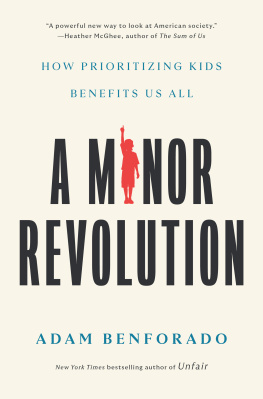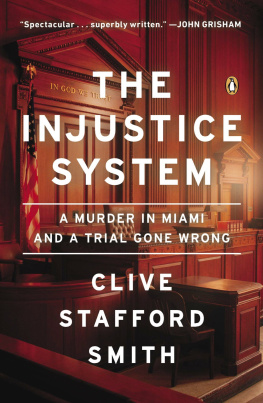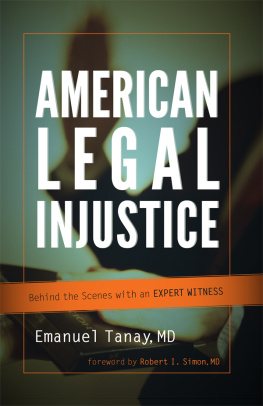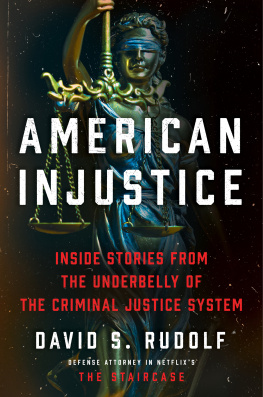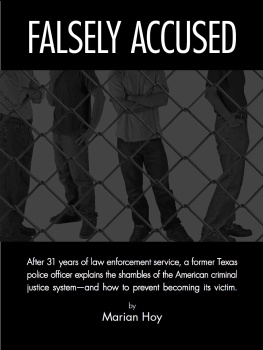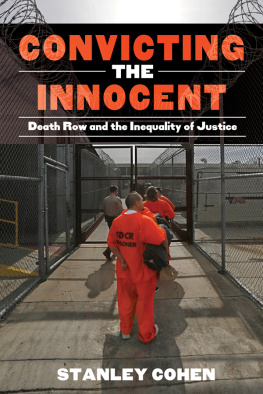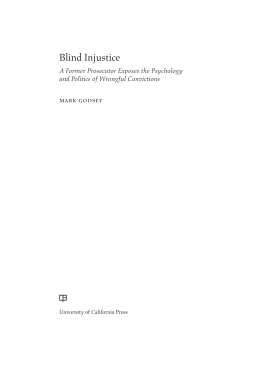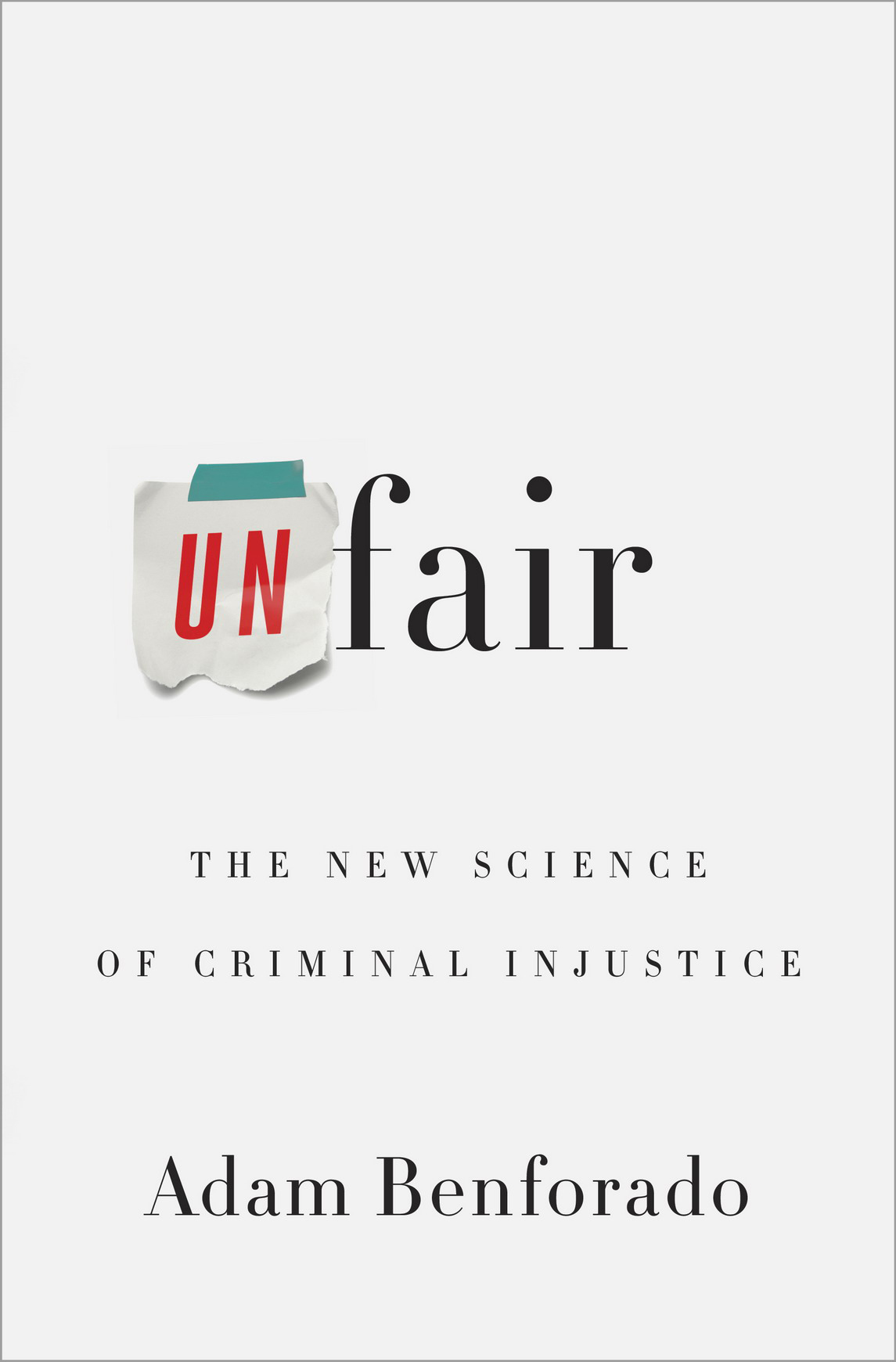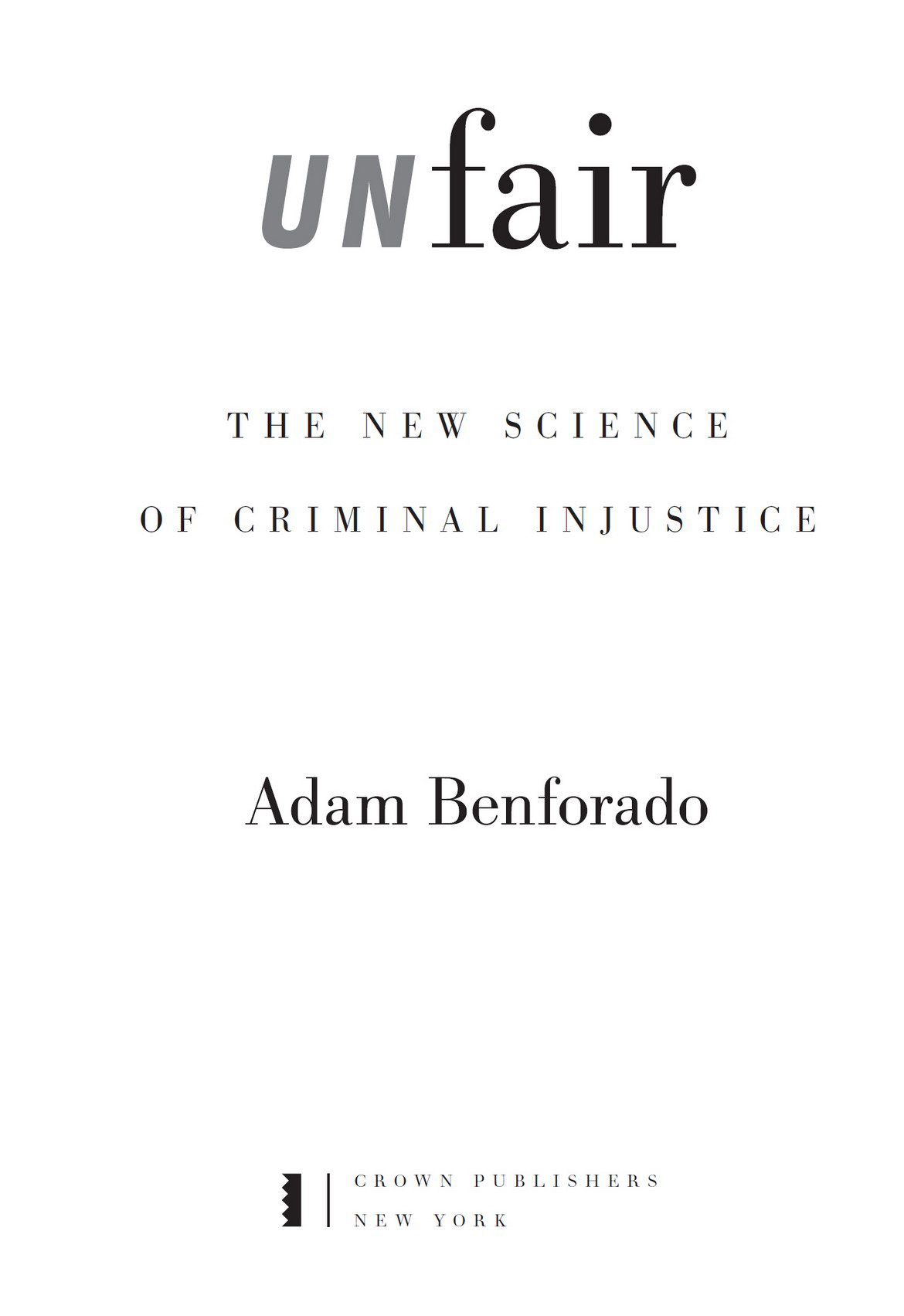Adam Benforado - Unfair: The New Science of Criminal Injustice
Here you can read online Adam Benforado - Unfair: The New Science of Criminal Injustice full text of the book (entire story) in english for free. Download pdf and epub, get meaning, cover and reviews about this ebook. year: 2015, publisher: Crown, genre: Detective and thriller. Description of the work, (preface) as well as reviews are available. Best literature library LitArk.com created for fans of good reading and offers a wide selection of genres:
Romance novel
Science fiction
Adventure
Detective
Science
History
Home and family
Prose
Art
Politics
Computer
Non-fiction
Religion
Business
Children
Humor
Choose a favorite category and find really read worthwhile books. Enjoy immersion in the world of imagination, feel the emotions of the characters or learn something new for yourself, make an fascinating discovery.

- Book:Unfair: The New Science of Criminal Injustice
- Author:
- Publisher:Crown
- Genre:
- Year:2015
- Rating:3 / 5
- Favourites:Add to favourites
- Your mark:
Unfair: The New Science of Criminal Injustice: summary, description and annotation
We offer to read an annotation, description, summary or preface (depends on what the author of the book "Unfair: The New Science of Criminal Injustice" wrote himself). If you haven't found the necessary information about the book — write in the comments, we will try to find it.
A child is gunned down by a police officer; an investigator ignores critical clues in a case; an innocent man confesses to a crime he did not commit; a jury acquits a killer. The evidence is all around us: Our system of justice is fundamentally broken.
But its not for the reasons we tend to think, as law professor Adam Benforado argues in this eye-opening, galvanizing book. Even if the system operated exactly as it was designed to, we would still end up with wrongful convictions, trampled rights, and unequal treatment. This is because the roots of injustice lie not inside the dark hearts of racist police officers or dishonest prosecutors, but within the minds of each and every one of us.
This is difficult to accept. Our nation is founded on the idea that the law is impartial, that legal cases are won or lost on the basis of evidence, careful reasoning and nuanced argument. But they may, in fact, turn on the camera angle of a defendants taped confession, the number of photos in a mug shot book, or a simple word choice during a cross-examination. In Unfair, Benforado shines a light on this troubling new field of research, showing, for example, that people with certain facial features receive longer sentences and that judges are far more likely to grant parole first thing in the morning.
Over the last two decades, psychologists and neuroscientists have uncovered many cognitive forces that operate beyond our conscious awareness. Until we address these hidden biases head-on, Benforado argues, the social inequality we see now will only widen, as powerful players and institutions find ways to exploit the weaknesses of our legal system.
Weaving together historical examples, scientific studies, and compelling court casesfrom the border collie put on trial in Kentucky to the five teenagers who falsely confessed in the Central Park Jogger caseBenforado shows how our judicial processes fail to uphold our values and protect societys weakest members. With clarity and passion, he lays out the scope of the legal systems dysfunction and proposes a wealth of practical reforms that could prevent injustice and help us achieve true fairness and equality before the law.
Adam Benforado: author's other books
Who wrote Unfair: The New Science of Criminal Injustice? Find out the surname, the name of the author of the book and a list of all author's works by series.

